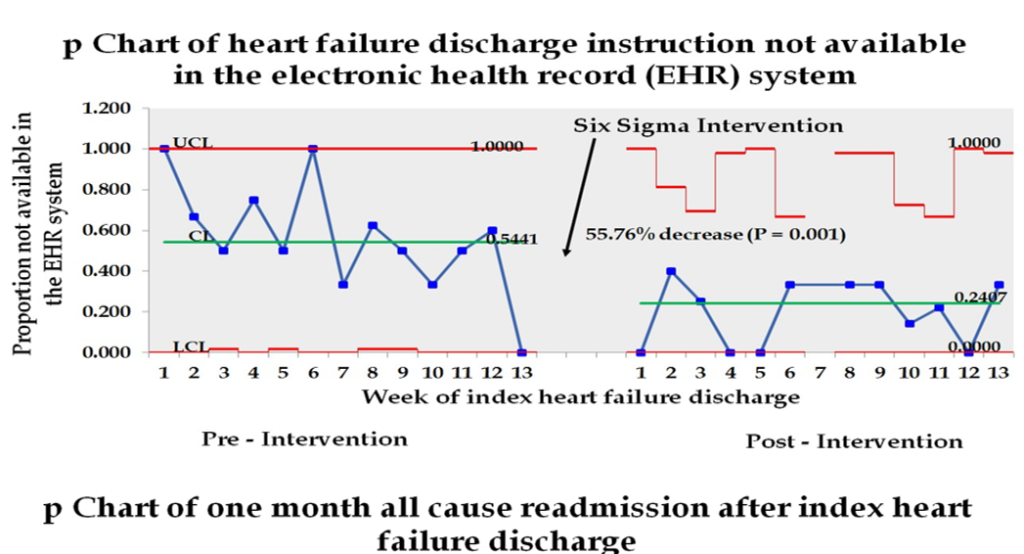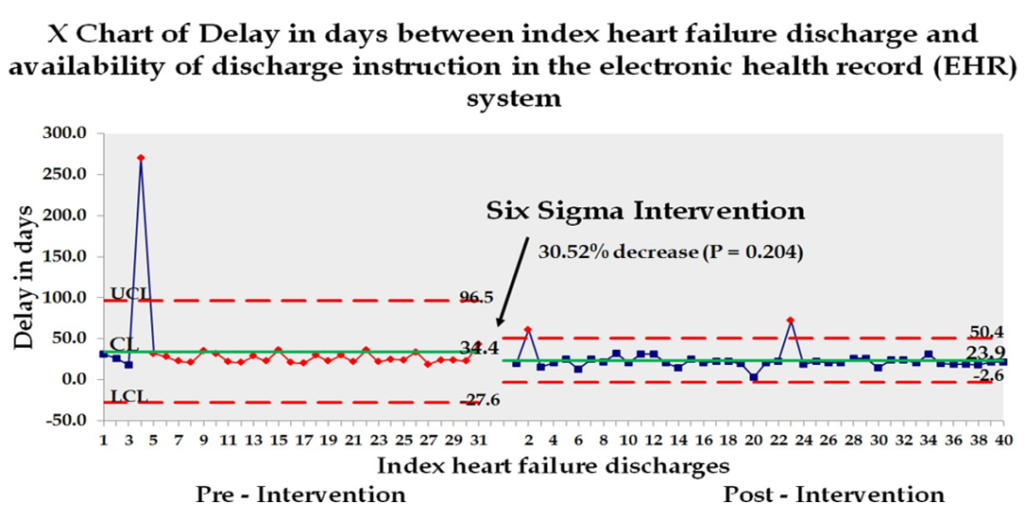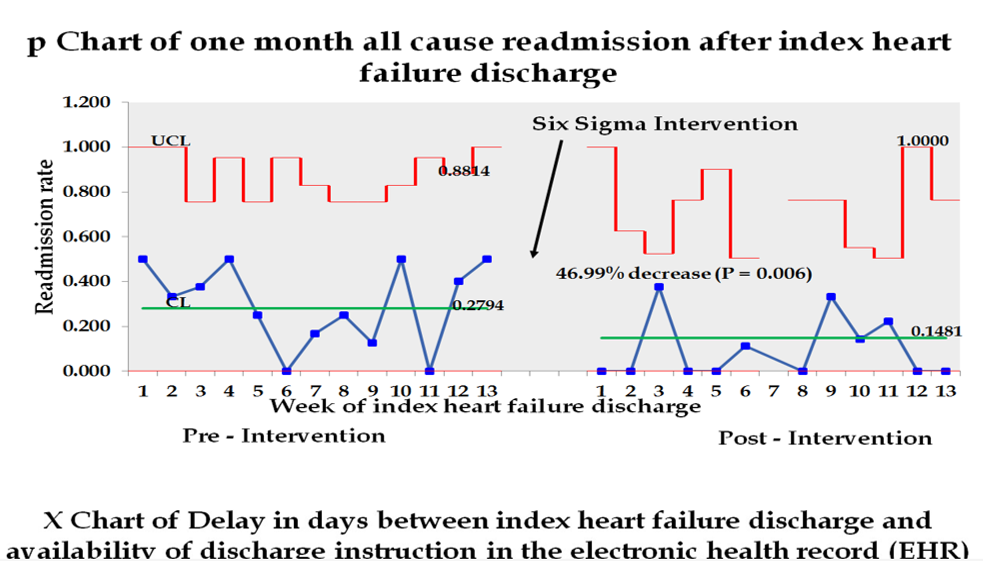At a Glance:
The founder of ORET Healthcare designed and led a successful Six Sigma project team targeting a critical healthcare issue, Congestive Heart Failure (CHF) care and readmission rates. The project notably led to a significant decrease in care process non-compliance rates and a substantial drop in one-month all-cause readmission rates.

Situation:
An academic safety-net hospital primarily serving African American patients disproportionately affected by CHF struggled with higher-than-average readmission rates. Non-compliance with heart failure-specific discharge instructions further exacerbated the issue. The challenge was to improve this situation without adding significant financial strain.
Key Metrics:
The ambitious project aimed to cut non-compliance rates, the delay between heart failure discharge, and the availability of discharge instructions by 30% within five months. The secondary target was a 30% reduction in the one-month all-cause readmission rate for heart failure patients over the same period.
Quality Improvement Design:
The team adopted Six Sigma’s DMAIC methodology—Define, Measure, Analyze, Improve, Control—to drive the quality improvement initiative. Several tools were used, including a critical-to-quality (CTQ) tree, Statistical Process Control (SPC), and Root Cause Analysis (RCA), to assess measures and ensure the project’s progress aligned with the goals set.
Solutions:
The multifaceted improvement plan implemented the following solutions:
- Deployed a robust strategy focused on people, organization, process, and technology.
- Established weekly concurrent monitoring of compliance and data analysis.
- Conducted capacity-building training for hospital ward teams.
- Ensured compliance with standardized Joint Commission requirements.
- Empowered compliance process owners for the heart failure-specific discharge instruction process.
- Implemented an electronic tracking system for compliance and liaised for a future automated process.
Results:
The efforts reaped significant improvements within five months:
- The rates of non-availability of heart failure-specific discharge instructions in the EHR system dropped by 55.76%.
- The delay between heart failure discharge and the availability of discharge instructions was reduced by 30.52%.
- One-month all-cause readmission rate fell by 46.99%.



Success Factors:
- A clearly defined and multifaceted improvement plan.
- Effective interdisciplinary collaboration.
- Data-driven decision-making using quality and data analytics tools.
- Rigorous monitoring through Statistical Process Control.
Call to Action:
Implementing the Six Sigma methodology can help healthcare institutions improve patient outcomes and reduce costs. We encourage healthcare institutions to embrace this data-driven, quality improvement approach.
How We Can Help:
Partner with ORET Healthcare to transform your healthcare processes and performance. Our expert team has experience in healthcare, data analytics, and quality improvement, leveraging the latest technology and Lean Six Sigma methodology to deliver effective, efficient, equitable, and sustainable solutions. Connect with us today to take the first step towards a better future for your organization.
